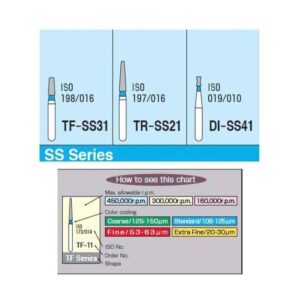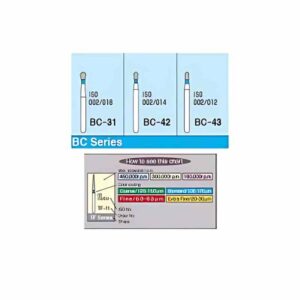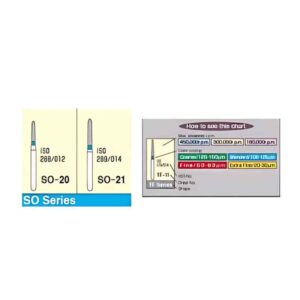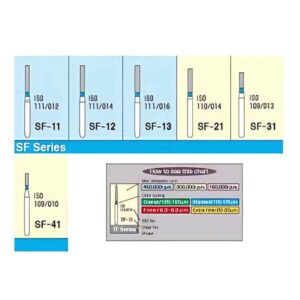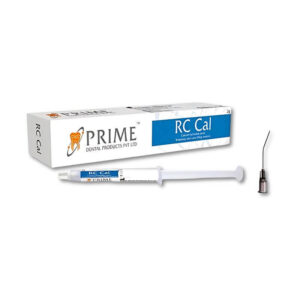+91-9912355536
support@dentxmart.com
Mani Diamond Burs – Rounded Shoulder / Rs Series
Diamond-coated dental burs designed for accurate cavity preparation, delivering optimal outcomes for dental treatments.
₹400.00 Original price was: ₹400.00.₹280.00Current price is: ₹280.00.
MRP Inclusive of all taxes
Buy more save more!
Buy from 5 to 10 items and get 1% OFF
on each productBuy from 11 to 20 items and get 2% OFF
on each product- Free shipping on all orders above Rs. 2,500
- No hassle returns, 10 days return
- Express delivery all over India
Product Details
Mani Diamond Burs are precision dental instruments designed with a stainless steel working part, which is coated with fine diamond crystals. These rotary grinding tools are specifically crafted for delicate work on hard tissues like teeth and bones, making them essential in dental procedures.
Compatible with dental handpieces, they allow for controlled and efficient use during various dental treatments. Beyond their primary application in dentistry, Mani Diamond Burs are versatile tools that can also be used for grinding a variety of hard materials.
These include metals, plastics, and porcelain, making them valuable not only in dental practices but also in industrial and laboratory settings where precise material removal is needed. Their fine diamond crystal coating guarantees durability and extended performance, making them a reliable choice for professionals seeking precision and efficiency in their work.
Features
- Tested for Quality: Undergoes thorough testing to ensure dependable performance.
- Precision Cutting: Delivers accurate and efficient cutting results.
- Minimal Debris: Reduces debris in the working area for a cleaner procedure.
- Versatile Functionality: Ideal for both cutting and grinding tasks.
- Perfect for Multi-Rooted Teeth: Excellent for sectioning multi-rooted teeth with ease.
- Durable Quality: Renowned for its long-lasting performance and superior quality.
- Effective Cutting: Guarantees optimal results for smooth and efficient dental procedures.
Specifications
- Shank Composition: Made of stainless steel.
- Shank Design: Friction grip type for secure attachment.
- Shape: Round shoulder design.
- Cutting Surface: Coated with fine diamond crystals bonded to the metal base.
Package Contents
- Pack of 5 Burs
Directions To Use
Prepare the Work Area:
Ensure that the work area is clean and well-organized. Have all the necessary dental equipment and materials readily available for use.
Select the Right Bur:
Choose the appropriate Mani Diamond Bur based on the specific shape, size, and grit required for the dental procedure at hand.
Insert the Shank:
Firmly insert the shank of the Mani Diamond Bur into the dental handpiece, ensuring a secure and stable fit.
Pre-Use Check:
Before starting the procedure, run the Mani Diamond Bur at a low speed to check for any wobbling or misalignment. If any issues are detected, replace the bur to maintain precision.
Prepare the Patient:
Make sure the patient is comfortable and properly anesthetized before beginning the dental procedure.
Coolant and Lubrication:
During the procedure, apply a continuous coolant spray to avoid overheating the bur and the treated area. Ensure a steady water flow to prevent clogging and reduce the risk of damage to the pulp.
Proper Pressure and Speed:
Apply the recommended pressure, usually between 20 to 50 PSI, based on the bur’s size. Use the bur within the maximum recommended RPM to prevent overheating and to maintain optimal efficiency.
Maintain Correct Motion:
Keep steady, controlled movements during the procedure. Avoid abrupt levering, tilting, twisting, or jamming motions. Do not use a pulling motion, as it can damage the bur and compromise the precision of the procedure.
Sterilization:
After the procedure, thoroughly clean and sterilize the instrument for safe reuse.









